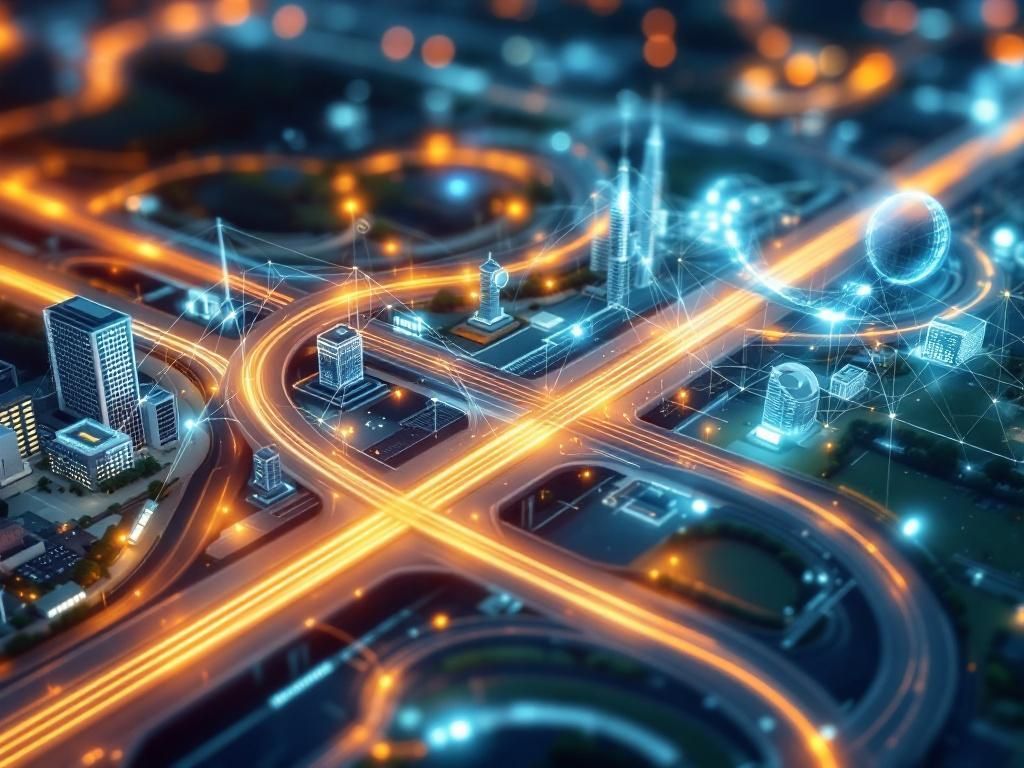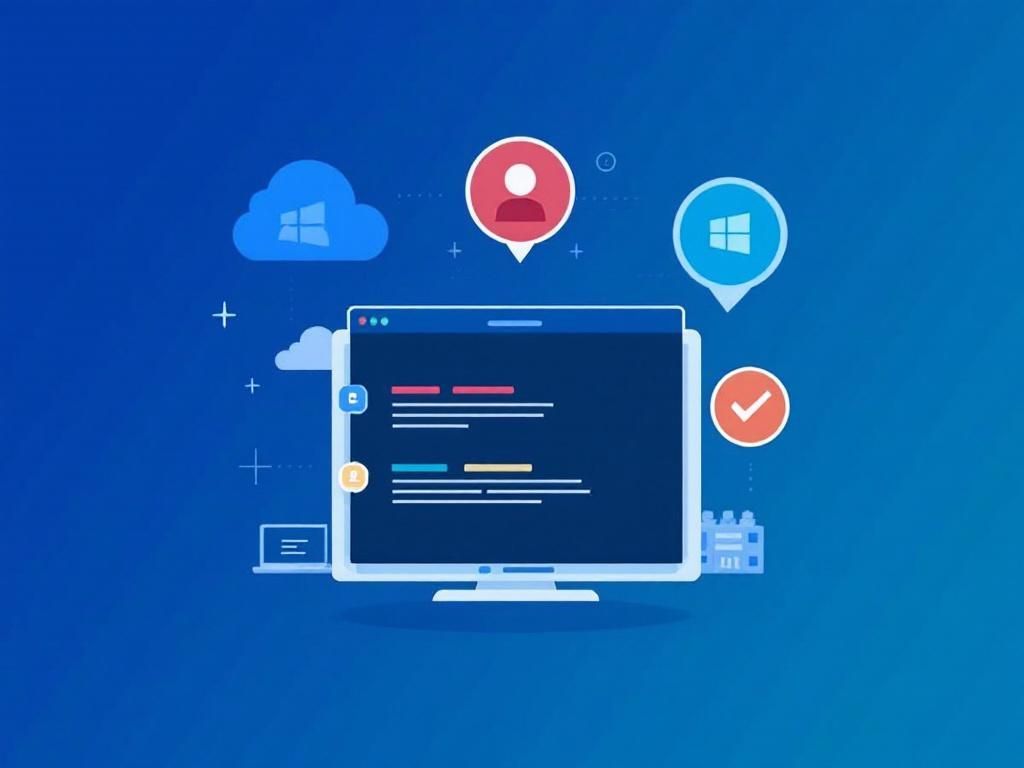The Future of Smart Infrastructure with Digital Twins in 2025
Explore how digital twins will revolutionize smart infrastructure by 2025, enhancing efficiency and sustainability in urban planning and development.

As technology continues to evolve at a breakneck pace, the concept of smart infrastructure is rapidly becoming a reality. Among the most promising innovations in this space is the use of digital twins, a technology that allows for the creation of highly accurate virtual models of physical assets. By 2025, it is expected that digital twins will play a crucial role in revolutionizing how we design, manage, and interact with infrastructure across various sectors.
Table of Contents
Understanding Digital Twins
A digital twin is a virtual representation of a physical object, system, or process. It serves as a bridge between the physical and digital worlds by utilizing real-time data monitoring and advanced analytics. Digital twins gather information from sensors and IoT devices, creating a comprehensive model that can predict performance, optimize operations, and drive decision-making.
Key Components of Digital Twins
- Data Acquisition: Sensors and IoT devices collect real-time data from the physical asset.
- Modeling: Advanced software models the data into a comprehensive digital representation.
- Analytics: Machine learning and AI algorithms analyze the data to generate insights.
- Visualization: Tools for visual representation help stakeholders understand the information clearly.
The Role of Digital Twins in Smart Infrastructure
Digital twins can substantially improve the efficiency and effectiveness of infrastructure management. Here are several ways they contribute:
1. Enhanced Monitoring
With continuous monitoring capabilities, digital twins provide real-time insights into the condition and performance of assets, allowing for:
- Proactive maintenance to prevent failures.
- Optimized resource allocation based on usage patterns.
- Improved safety measures through constant surveillance.
2. Predictive Analytics
By simulating different scenarios using historical and live data, digital twins can forecast future performance and potential problems. This allows organizations to:
- Anticipate failures and reduce downtime.
- Optimize maintenance schedules.
- Enhance operational efficiency.
3. Improved Collaboration
Digital twins enable better collaboration among stakeholders by providing a shared platform for visualizing data and information. This facilitates:
- Cross-departmental collaboration in decision-making.
- Engagement with external partners and vendors efficiently.
- Enhanced stakeholder communication through dynamic visualization tools.
Use Cases of Digital Twins in Various Sectors
Digital twins are being implemented across numerous sectors, each reaping significant benefits. Below are some notable examples:
1. Transportation
Digital twins of vehicles and transportation networks can help cities manage traffic flow, optimize public transport routes, and reduce congestion.
2. Urban Development
In urban planning, digital twins assist in creating realistic models of city architecture, enabling better resource management and sustainability initiatives.
3. Manufacturing
Manufacturers utilize digital twins to streamline production processes, monitor machinery health, and improve supply chain management.
4. Energy Sector
Energy companies leverage digital twins for grid management, optimizing energy distribution and forecasting energy consumption trends.
Challenges in Implementing Digital Twins
While the impact of digital twins is promising, several challenges exist in their implementation:
1. Data Privacy and Security
With extensive data collection comes the risk of data breaches and privacy concerns, necessitating robust cybersecurity measures.
2. Integration with Legacy Systems
Many organizations still rely on outdated infrastructure, making integration with digital twins a complex task that requires careful planning.
3. High Initial Costs
Setting up the necessary infrastructure and technology for digital twins can be costly, potentially deterring smaller organizations from adopting it.
The Future of Digital Twins by 2025
As we look towards 2025, the evolution of digital twins is set to bring transformative changes across multiple industries:
1. AI and Machine Learning Integration
The integration of advanced AI and machine learning algorithms will enhance the predictive capabilities of digital twins, allowing for more accurate forecasts and automated responses.
2. Widespread Adoption
As costs decrease and technology becomes more accessible, it is anticipated that digital twins will see widespread adoption across various sectors and sizes of organizations.
3. Interoperability
Future digital twin solutions will likely focus on interoperability, allowing different systems to communicate seamlessly and share insights across different platforms.
Conclusion
The future of smart infrastructure is inextricably linked to the advancements in digital twin technology. As we move closer to 2025, the potential for digital twins to enhance efficiency, collaboration, and predictive analytics in infrastructure management is immense. Organizations that embrace this technology will not only optimize their operations but also pave the way for a smarter, more resilient future.
FAQ
What are digital twins in smart infrastructure?
Digital twins are virtual representations of physical assets, systems, or processes that use real-time data to simulate, predict, and optimize the performance of infrastructure.
How will digital twins impact urban planning by 2025?
By 2025, digital twins will enable urban planners to visualize and analyze city dynamics, optimize resource allocation, and enhance sustainability efforts, leading to smarter and more efficient urban environments.
What industries are adopting digital twins for smart infrastructure?
Industries such as construction, transportation, energy, and manufacturing are increasingly adopting digital twins to improve operational efficiency, reduce costs, and enhance decision-making.
What are the benefits of using digital twins in infrastructure management?
Benefits include improved predictive maintenance, enhanced asset management, real-time monitoring, reduced downtime, and increased operational efficiency.
What technologies are driving the development of digital twins?
Technologies such as IoT, artificial intelligence, big data analytics, and cloud computing are driving the development and implementation of digital twins in smart infrastructure.
How can businesses prepare for the integration of digital twins by 2025?
Businesses can prepare by investing in IoT devices, data analytics tools, and training personnel on digital twin technologies, ensuring they are ready to leverage the benefits of smart infrastructure.







